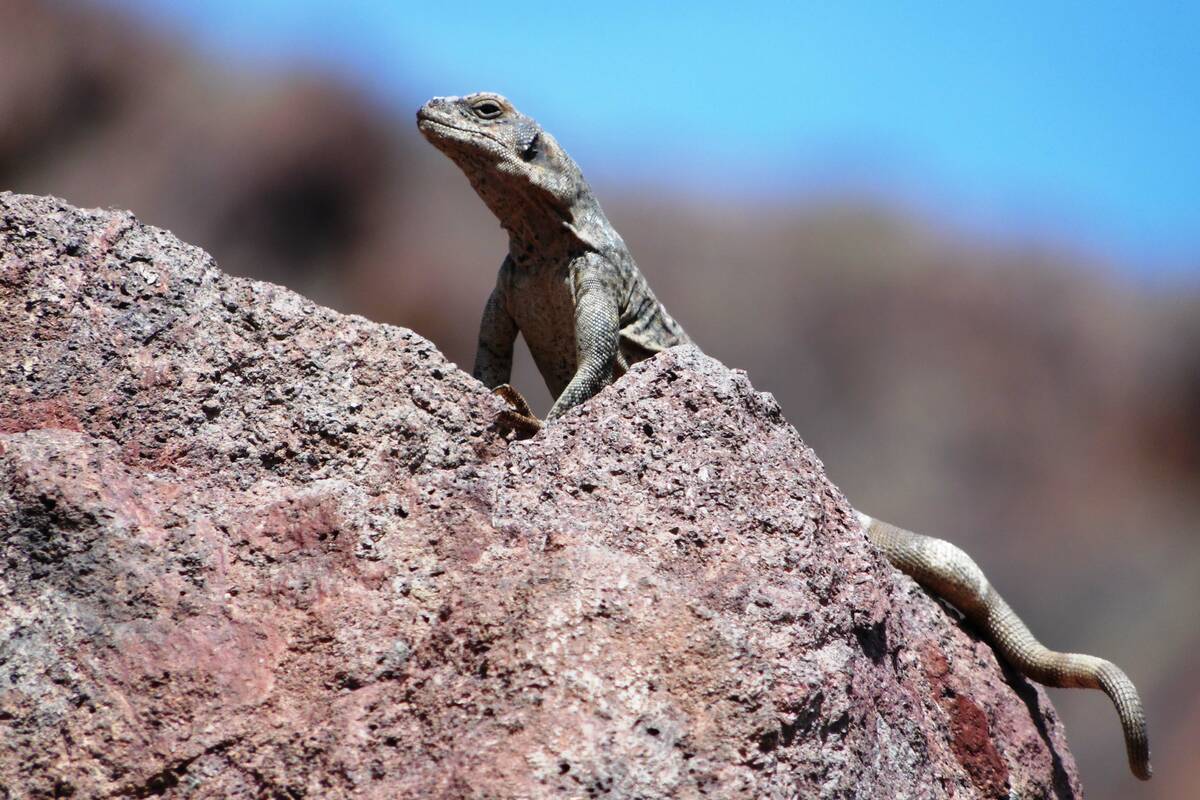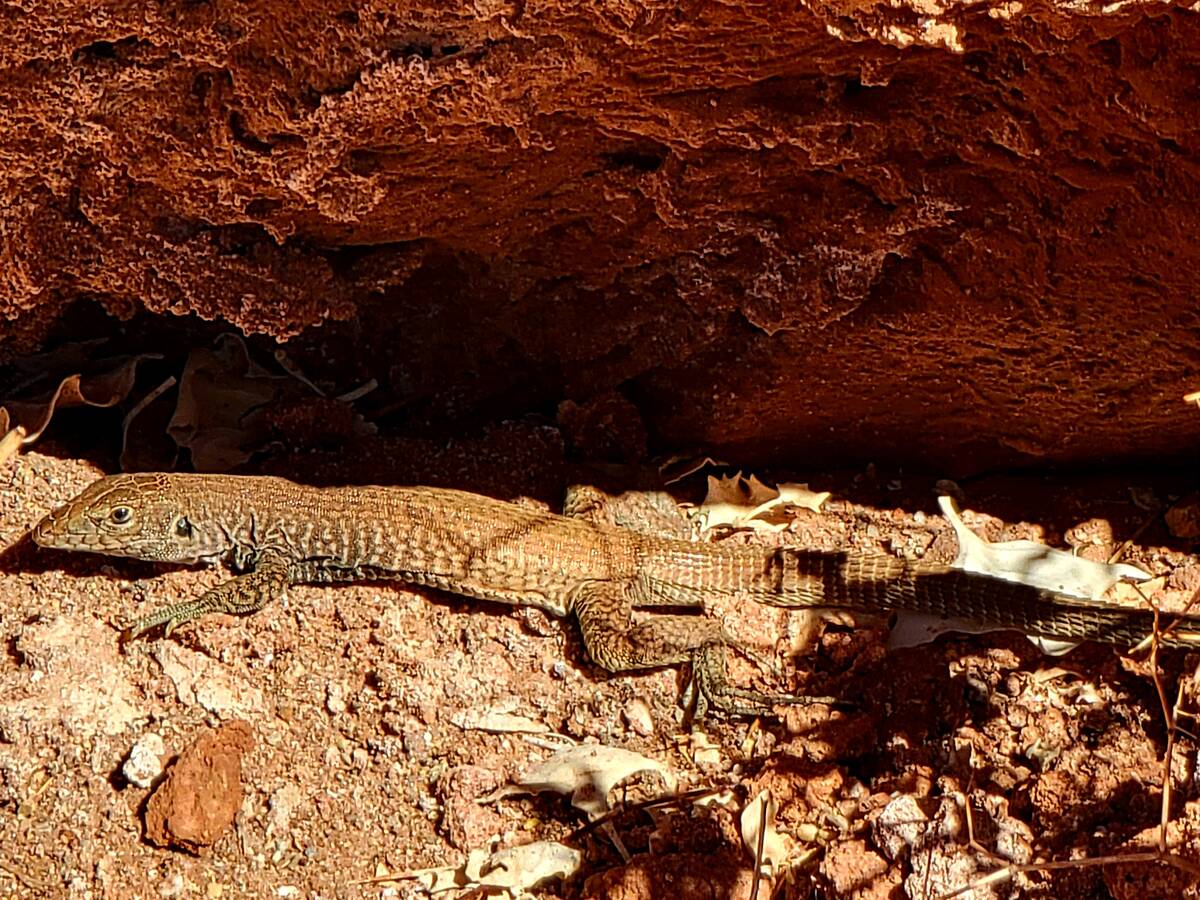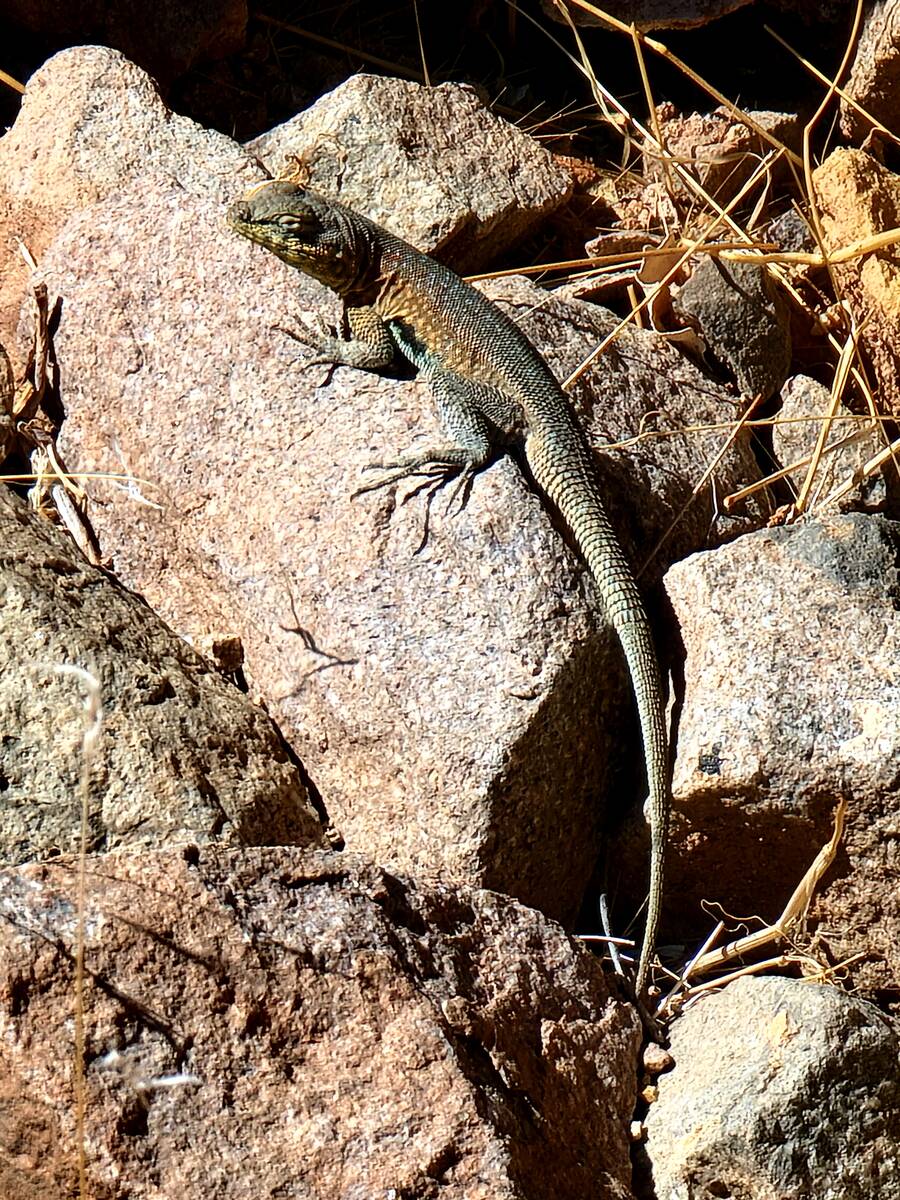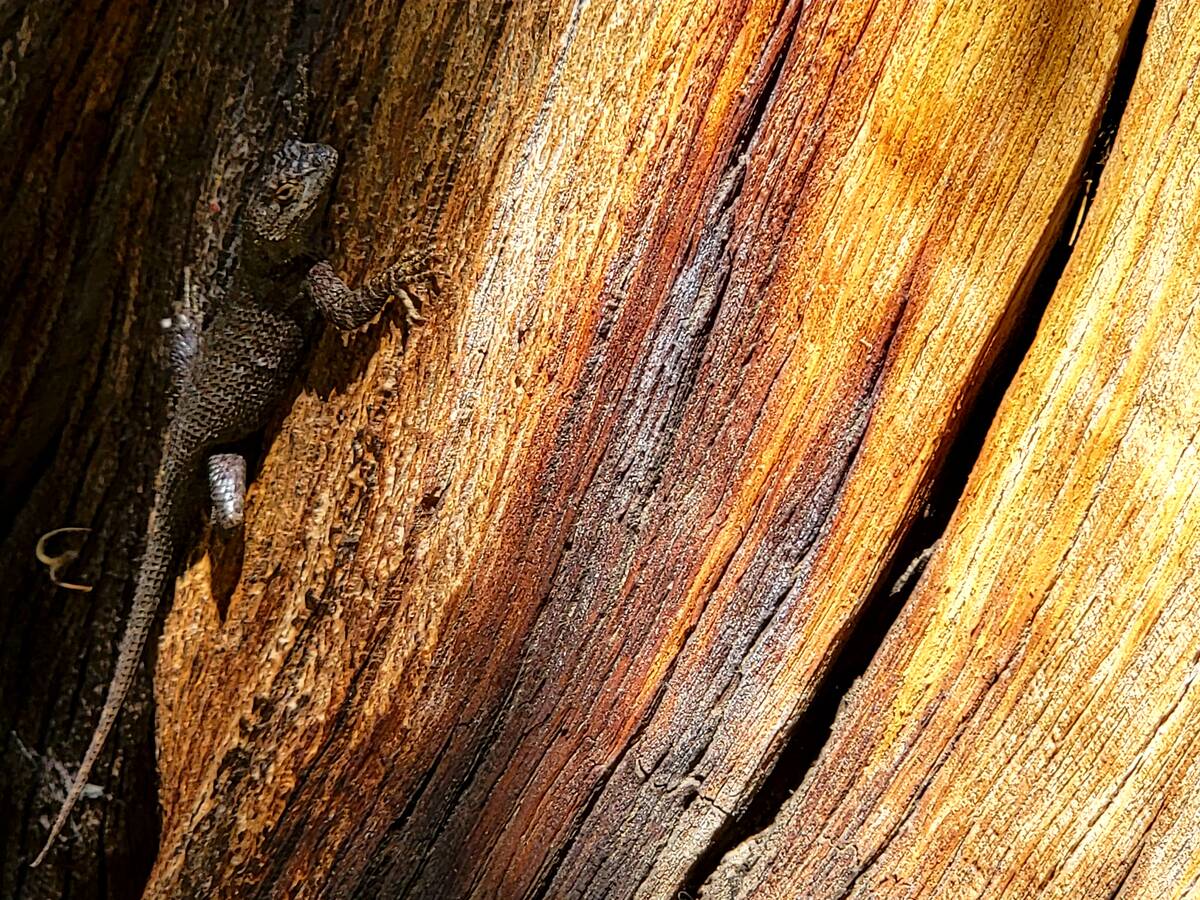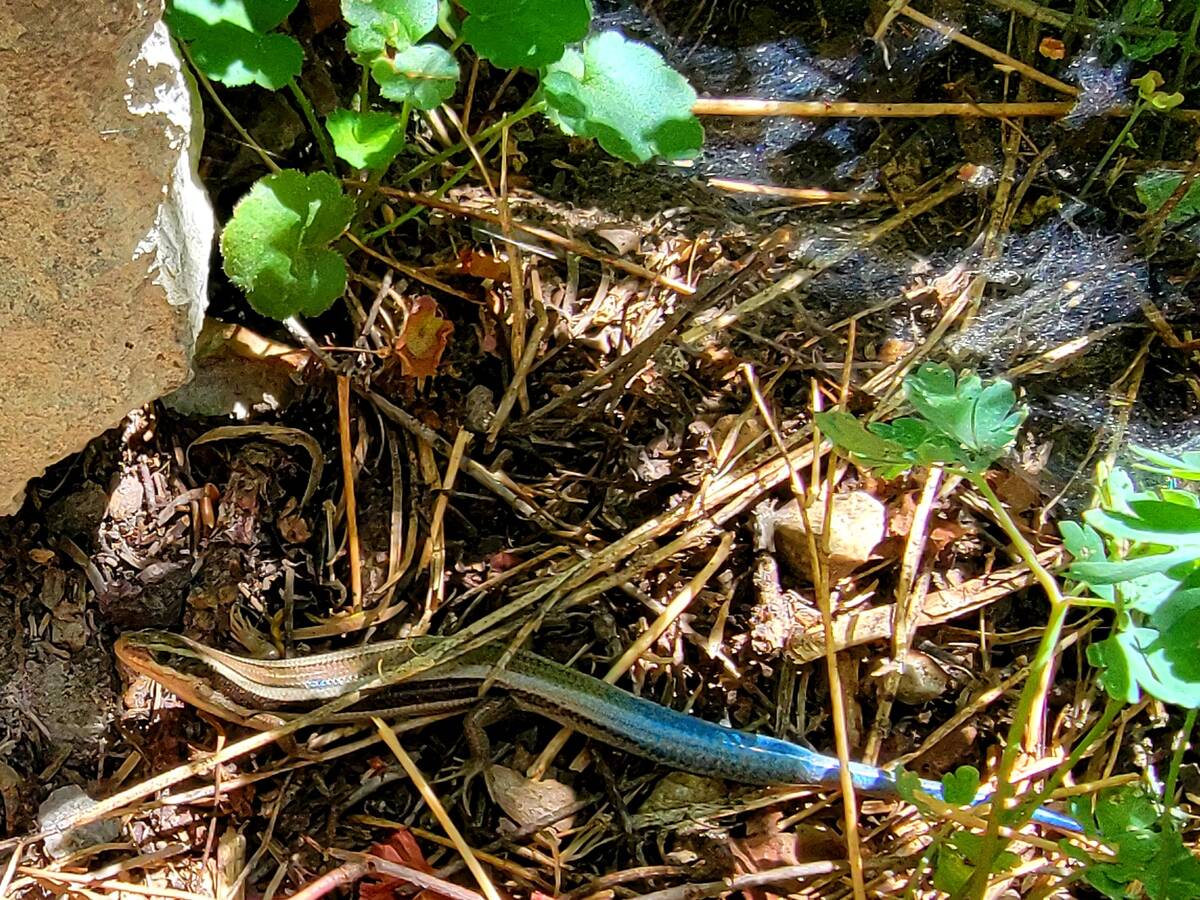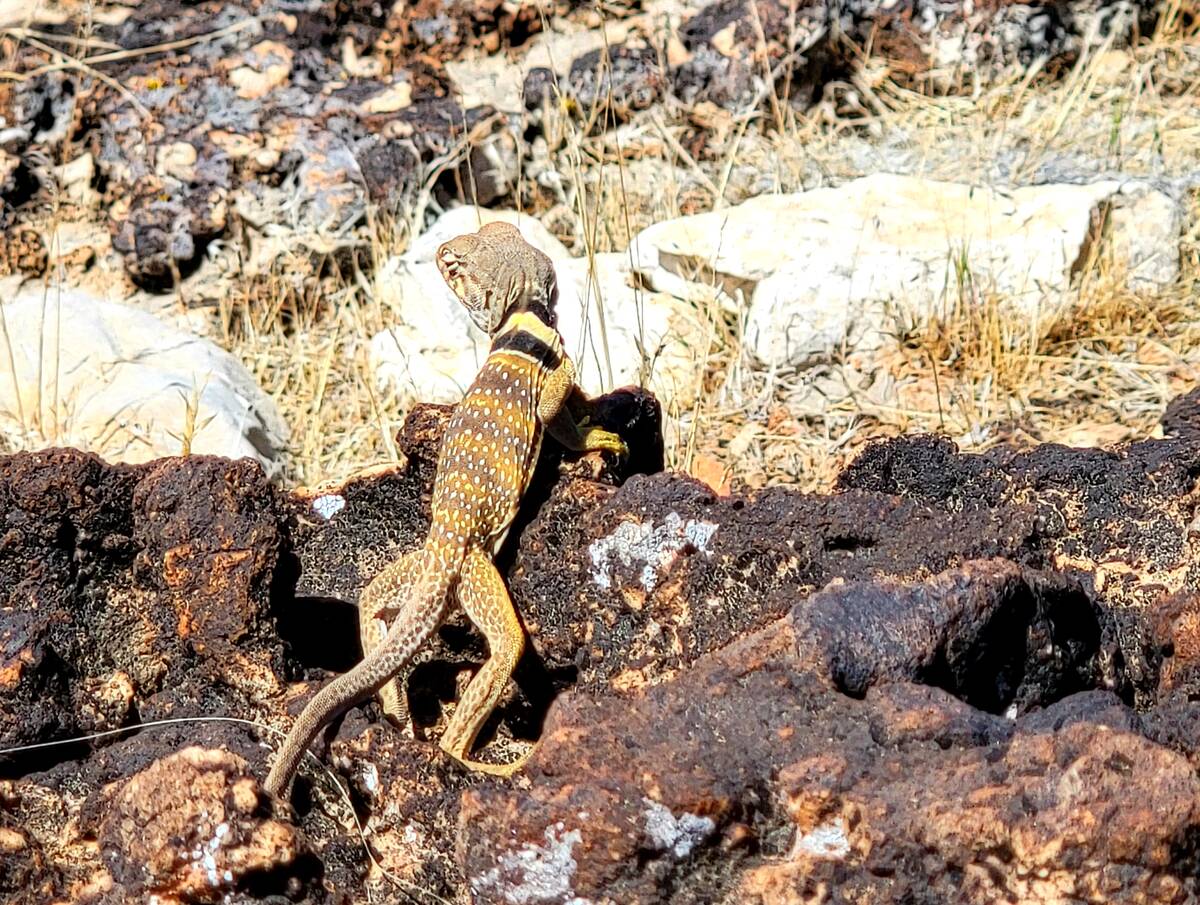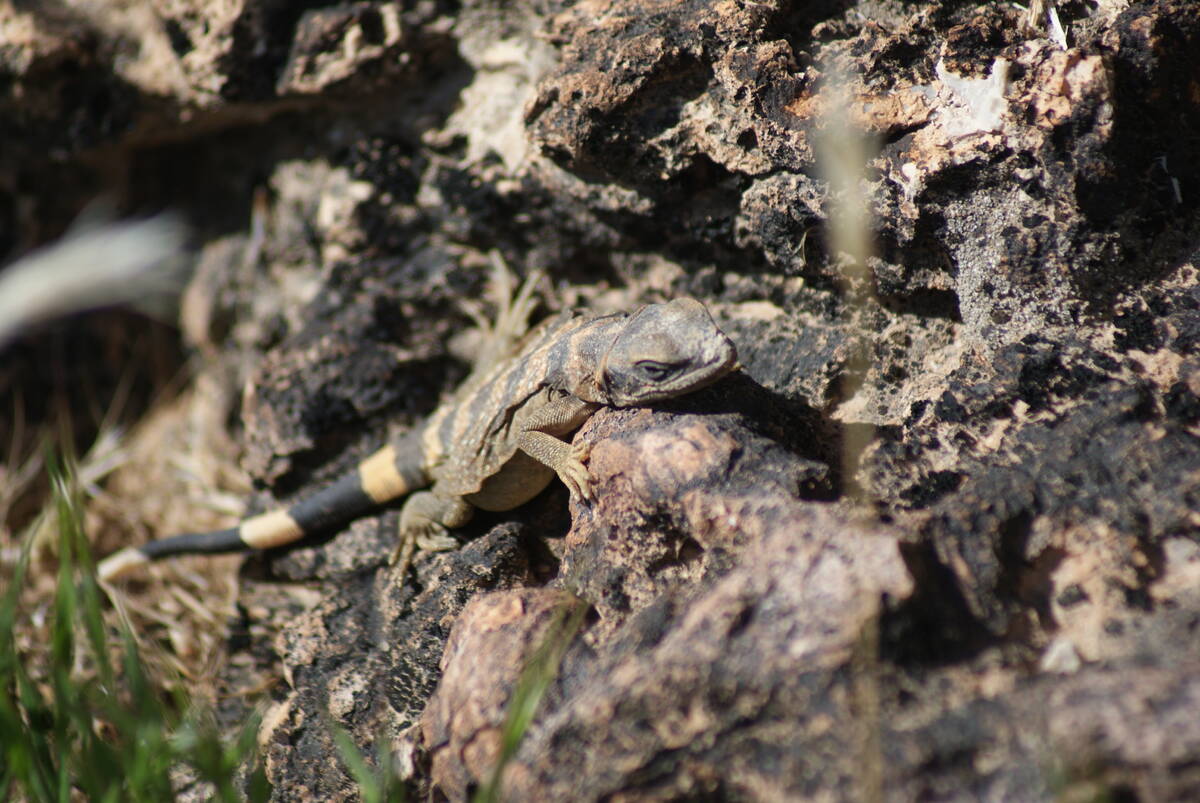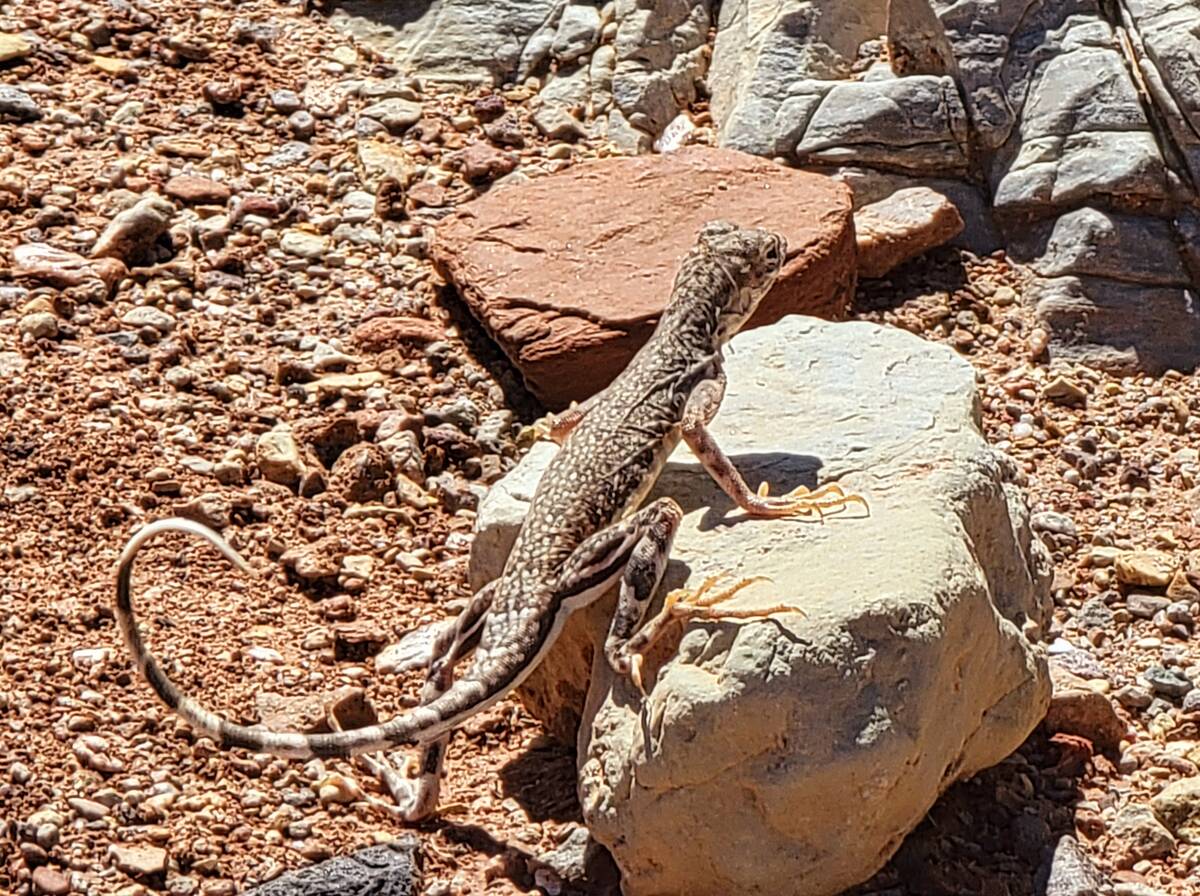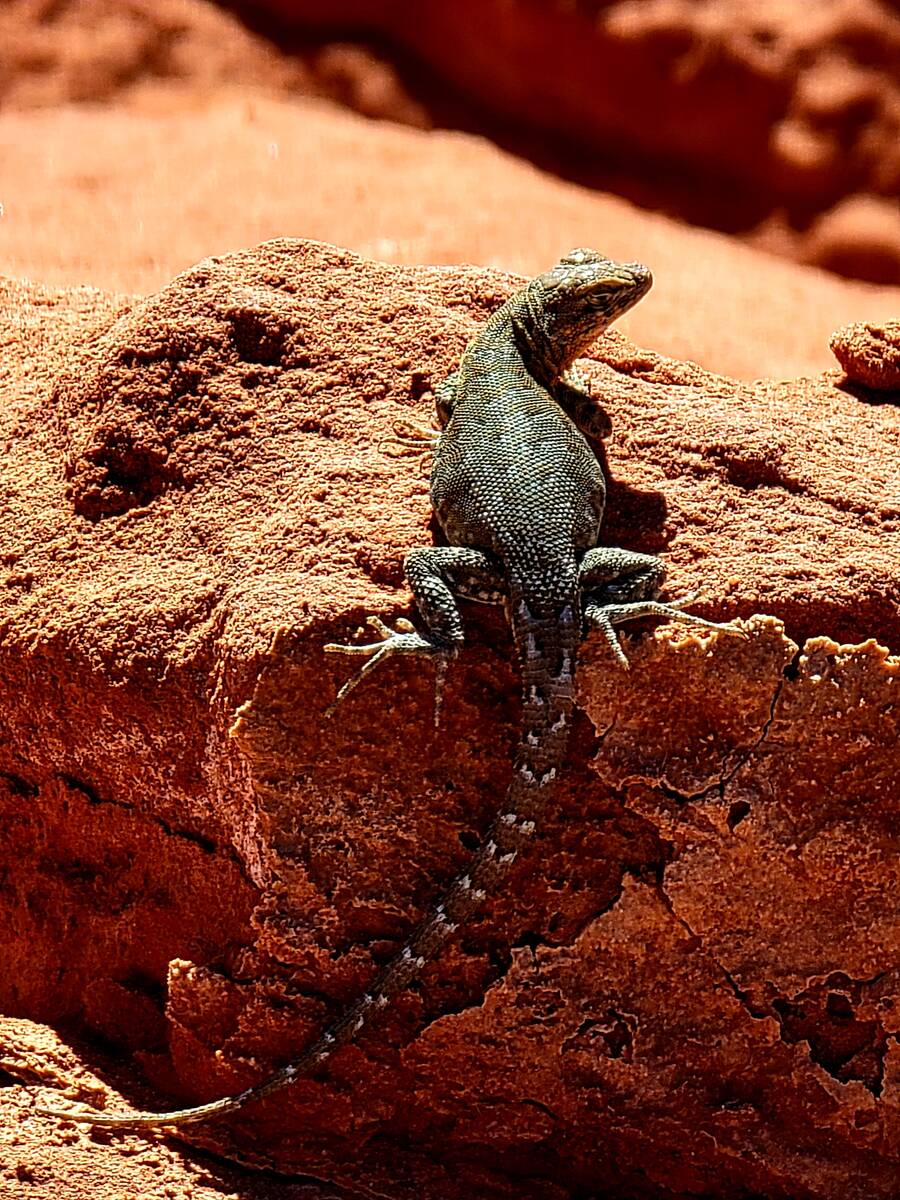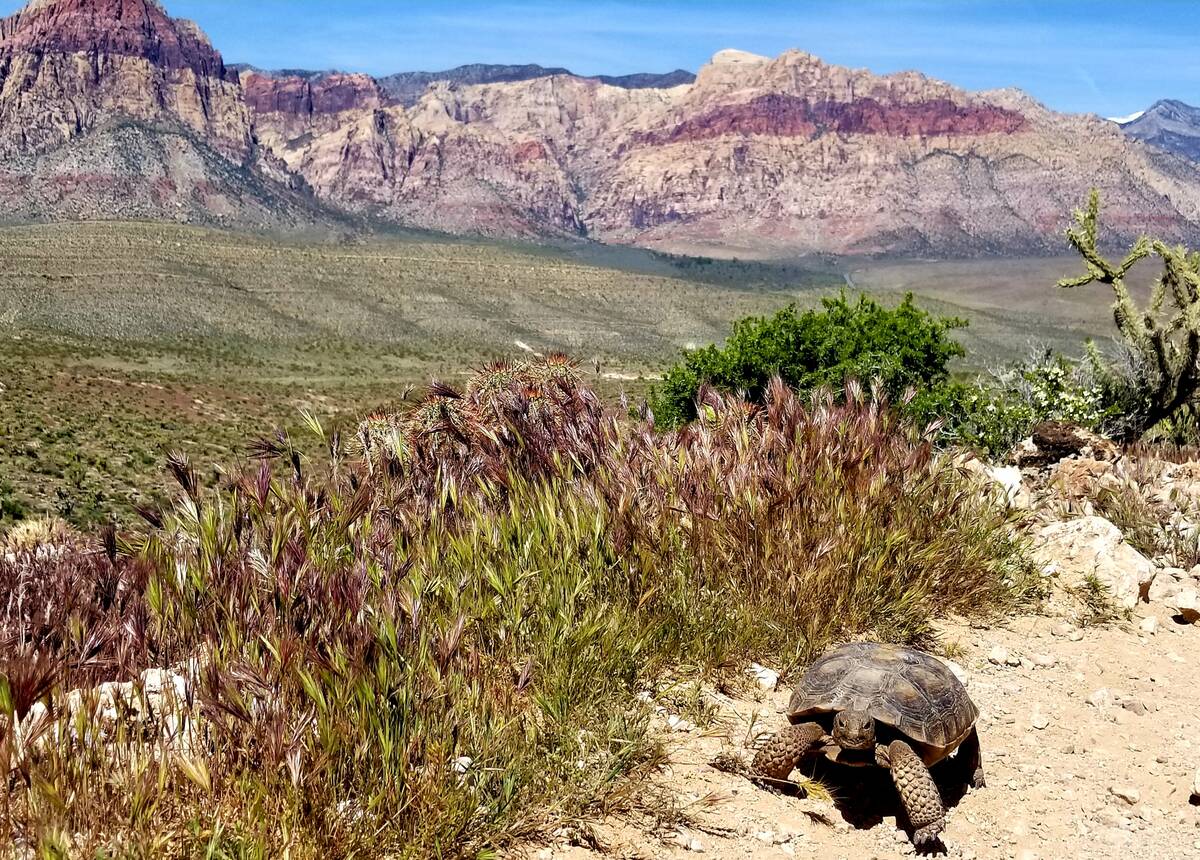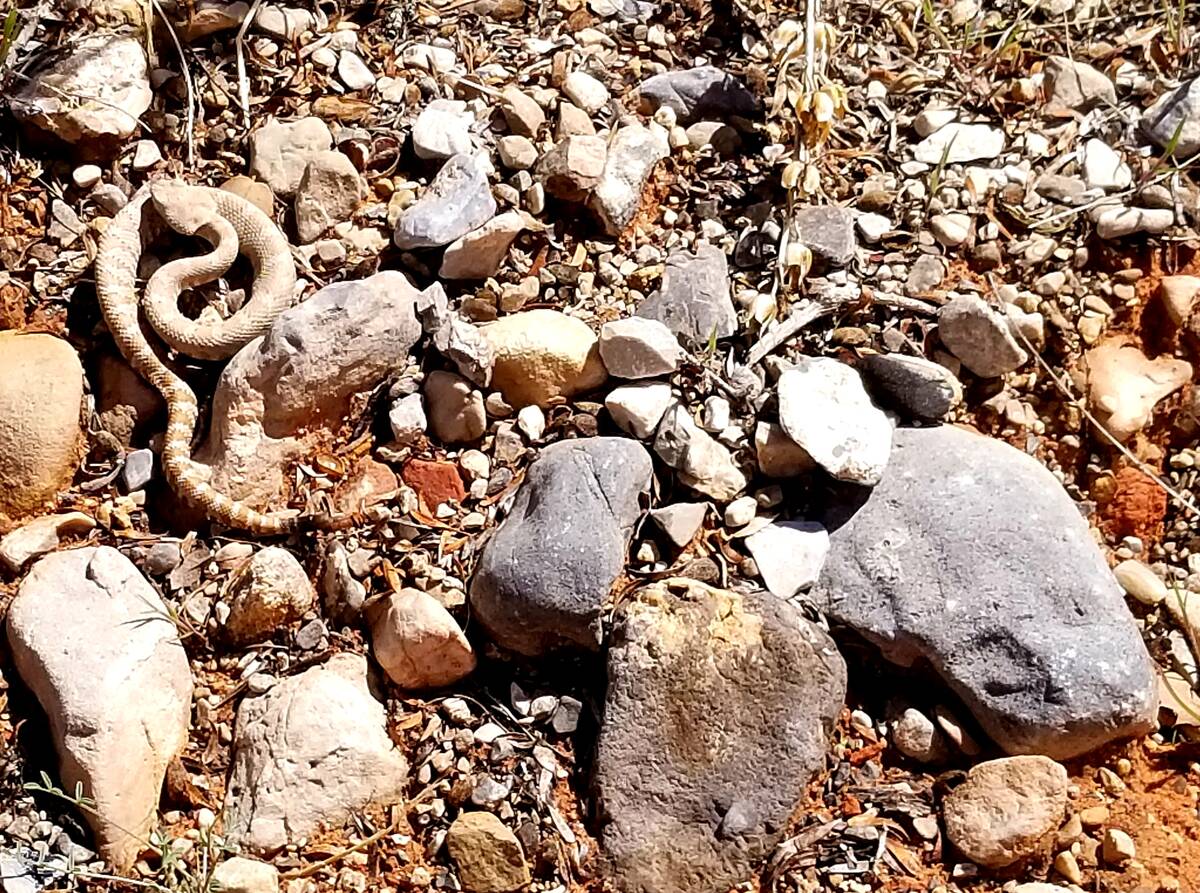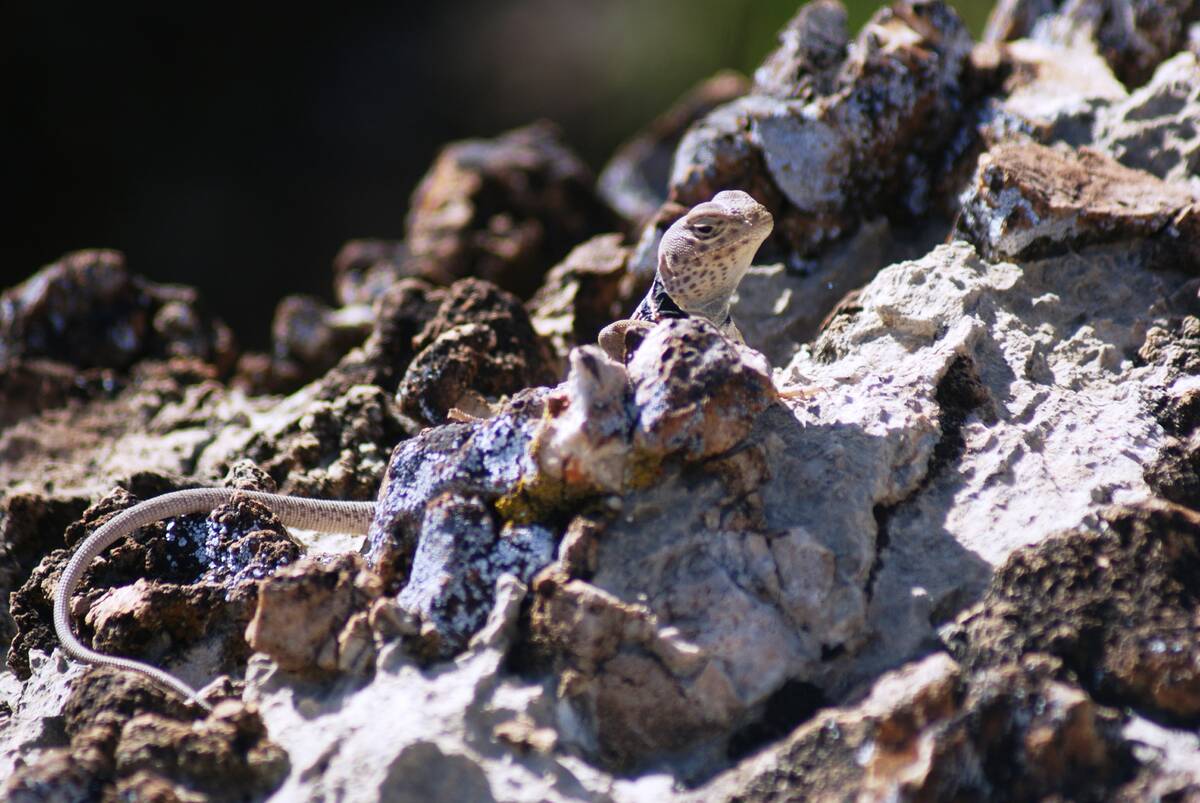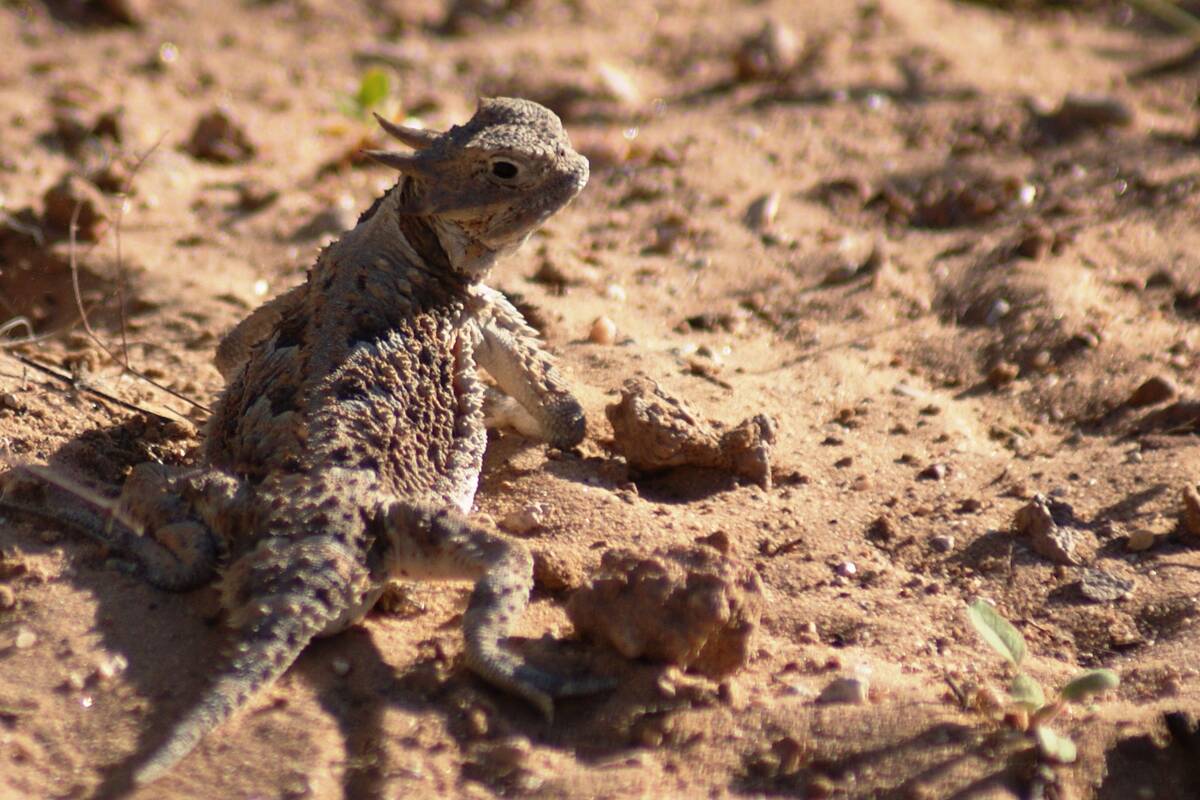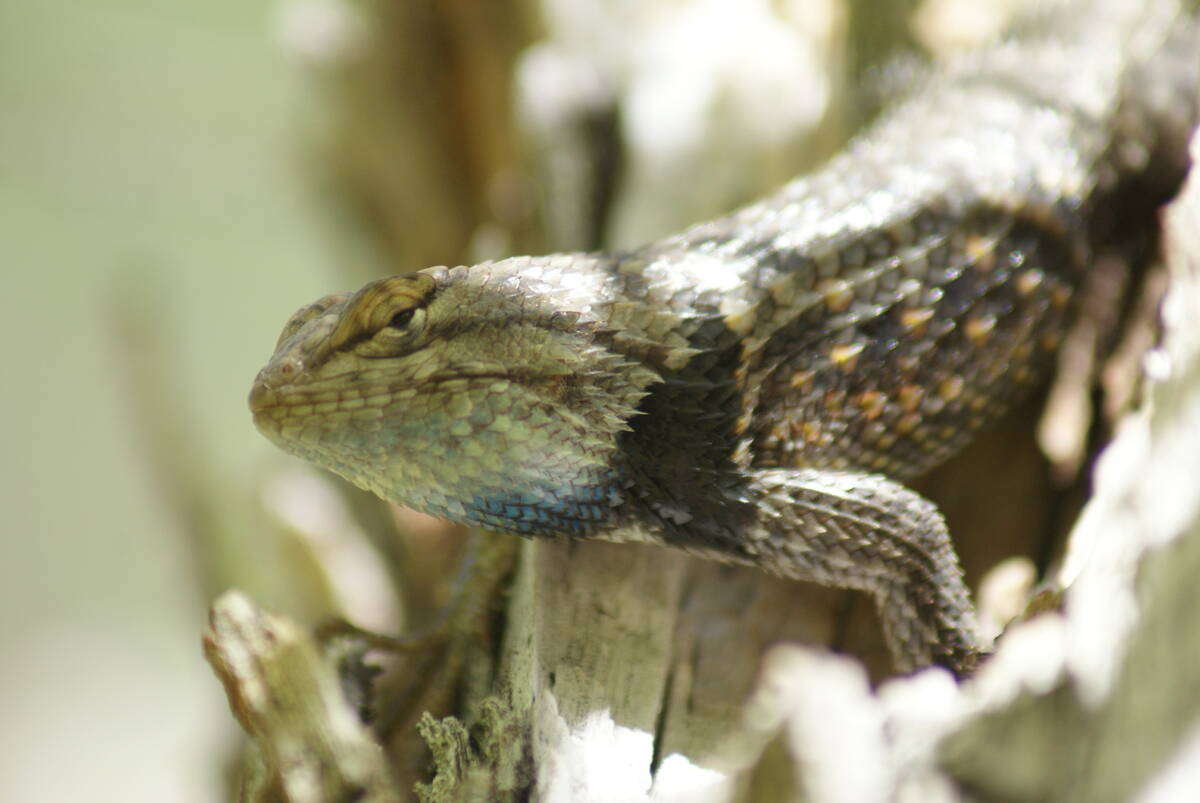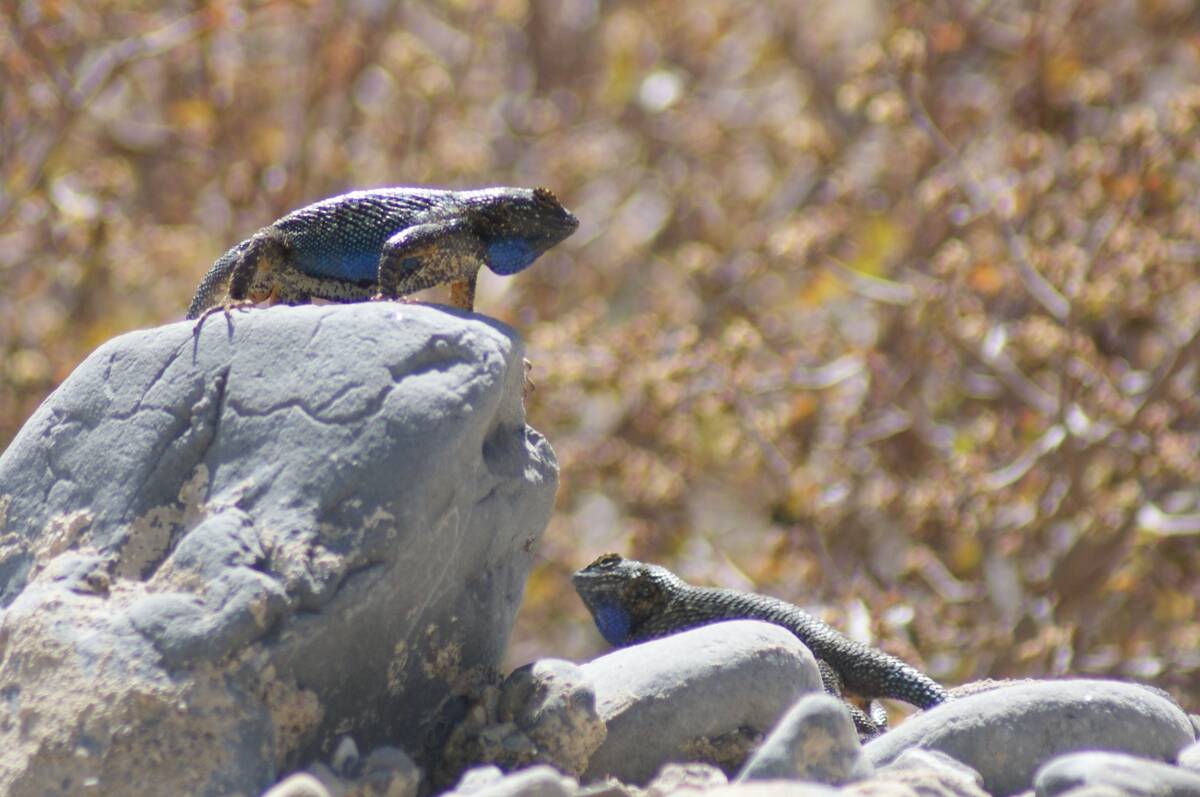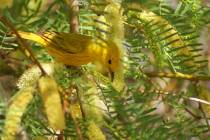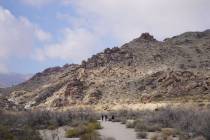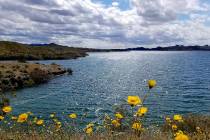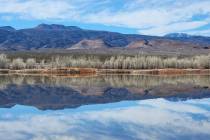Spring hiking brings your best chance to see Nevada’s lizards, snakes
Hitting the desert trails often is a Southern Nevada spring hiker’s key to keeping company with lizards.
After hiding for months from winter’s cooler temperatures, western zebra-tailed lizards have returned to their business of skittering across the Mojave Desert floor. Yellow-backed spiny lizards with dragonlike scales and turquoise highlights can again be seen ordering neighboring males to back off. And bulky chuckwallas may be spotted in their lookout posts atop rock castles.
“April is really the kickoff when temperatures are consistently above 75 degrees,” said wildlife biologist Curtis Walker with the Bureau of Land Management’s Southern Nevada office. “Generally their prime concern is to get back and refuel, so they can be fit for breeding season and impress each other and defend their territories.”
Some of the best venues for lizard spotting, Walker said, are Valley of Fire State Park, Red Rock Canyon National Conservation Area, Sloan Canyon National Conservation Area, and Lake Mead National Recreation Area. It can be a challenge to not see lizards when hiking this time of year.
Among the easier species to spot are side-blotched lizards, zebra tails, yellow-backed spiny lizards, chuckwallas, Great Basin fence lizards and whiptails. It’s possible to happen upon Great Basin collared lizards, horned lizards and desert iguanas. The least likely to add to anyone’s reptilian beast list is the federally protected and venomous Gila monster.
Searching in places where hillsides start flattening out to desert floor is a strategy that could yield more sightings. “A lot of times where you have two habitat types that meet are your best areas to find things because there will be more of a diversity of resources,” Walker said.
Superpowers of local lizards
The respect for reptiles that Walker had as a South Carolina kid appears not to have faded much as he talks about the superpowers of local lizards that are relatively easy to find.
“Western zebra tails are exceptionally fast little guys,” he said about that Lake Mead regular. “They can actually run up to about 18 miles an hour. To scale, that’s incredible considering how much smaller they are than us.” Another remarkable detail about the handsome gray, black and white western zebra-tailed lizard is the banded tail that quickly curls, flips and whips. Such movements are thought to be aimed at directing predators toward the tail and away from the lizard’s core. For many lizards, the ends of their tails are dispensable because they can be regenerated.
Mojave Desert lizards’ feet help make them nimble rock climbers and allow them to maintain their balance during the most precarious of times. The toes of many local lizards appear spindly and disproportionately long, almost like spider legs ending in sharp claws.
Also extraordinary are the lizards’ evolutionary adaptations in the country’s driest environment. “Most lizards we have don’t need to drink water,” Walker said. “They get a lot of their water from what they eat, in some cases all of it. There are some species that will never dip their heads down to get a drink.”
Expertly blending into rocky backgrounds, lizards are survival specialists that regulate their body temperature based on the surrounding environment. That makes them ectothermic, and that means they mostly hide in rock crevices and burrows during winter months. Their ability to survive at a lower metabolic rate and tap into extra body fat is another superpower of theirs. “They have very efficient renal and physiological systems that allow them to store water and use it throughout their bodies,” Walker said.
Lizards are most active from April to June, when breeding season can turn male underbellies and throats electric blue, turquoise, bright yellow and burnt orange. As Southern Nevada temperatures soar, reptiles limit their activity and seek cover to prevent overheating. During summer months, they are more likely to be seen in early mornings and late afternoons.
Snakes
No conversation about Mojave Desert reptiles is complete without the mention of snakes, which also might be seen or heard on spring hikes. Watch where you’re stepping and avoid surprising anything that might be hiding in the vegetation.
Red racers and gopher snakes are possibilities, but the potential of a rattlesnake encounter gets the most attention because they are venomous. Keeping your distance when seeing or hearing a rattlesnake is always the best strategy, but if you are bitten, experts advise remaining calm (physically and emotionally to slow circulation) and getting to an emergency room as quickly as possible.
Desert tortoise and recent reptile sightings
Seeing a desert tortoise ambling along in search of flowers and leaves is another possibility. Those reptiles are federally protected and need their space. Too close an encounter with humans could frighten a tortoise and trigger a loss of stored fluids needed for survival.
The tortoise has been listed as a threatened species under the U.S. Endangered Species Act because of population decline due to predation, collection by humans, off-highway vehicles, and upper respiratory tract disease.
Walker said Southern Nevada’s reptiles are impressive in their ability to adapt and thrive in the Mojave Desert’s harsh climate and ecosystem. “They’re just such a unique and diverse group of animals,” he said. “They’ve always been very interesting to me.”
Trail sightings
My lists of repeat reptile sightings from recent years of hiking locally:
Lake Mead National Recreation Area: 33 Hole (zebra-tailed and side-blotched lizards), Cottonwood Wash (zebra-tailed, side-blotched and whiptail lizards), Owl Canyon (chuckwalla, side-blotched and whiptail lizards; desert iguana), Railroad Tunnel trail (chuckwalla and side-blotched lizards), and Lower Colorado River (chuckwalla and zebra-tailed lizards)
River Mountain Foot Trail in Boulder City (a most reliable lizarding spot): zebra-tailed, side-blotched, chuckwalla and whiptail lizards; speckled rattlesnake, sidewinder and desert tortoise
Red Rock Canyon National Conservation Area, trails off 13-mile driving loop: side-blotched, yellow-backed spiny, northern sagebrush, chuckwalla and horned lizards; speckled and Mojave green rattlesnakes; gopher snake, desert striped whipsnake
Fossil Ridge area across state Route 159 from Red Rock's 13-mile driving loop (an impressive lizarding spot): Great Basin collared lizard, chuckwalla, horned and side-blotched lizards; desert tortoise, gopher snake
Clark County Wetlands Park Nature Preserve: Yellow-backed spiny, side-blotched and whiptail lizards; gopher snake
Kyle Canyon in Mount Charleston area: Great Basin fence and northern sagebrush lizards; western and western red-tailed skinks



